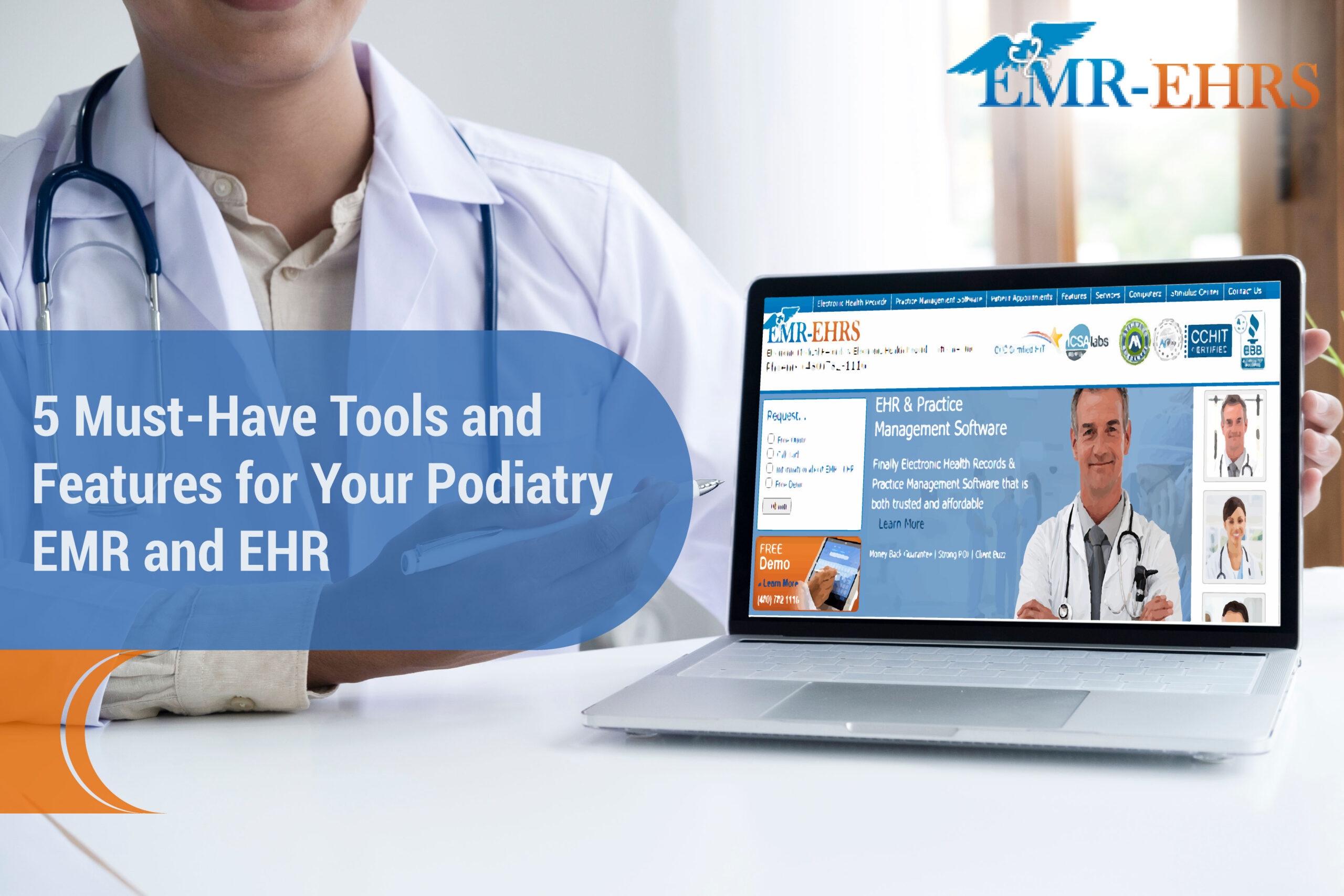
Podiatrists with solo practices or that do nursing home visits need the best Podiatry EMR and EHR software to have a smooth workflow and provide their patients with the best care possible. Moreover, neither the staff nor physicians have to go through the stress of trying to use software that doesn’t align with their processes and settings.
We present you with the top 5 must-have tools and features for your Podiatry EMR and EHR software before you use and implement it in your practice.
1. Secure Messaging for Patients via Patient Portal
The National Library of Medicine study found that patient portals improved psychological outcomes, medication adherence, and preventive health care use. To encourage patients to take part in their health care, we must understand patient portals’ role as effective interventions.
Look for an EHR system with secure messaging capabilities for your podiatry practice. This patient portal feature has been shown to improve provider and patient workflow. For instance, if a patient does not appear to attend the clinic in person, he can contact you directly through the portal. It helps reduce no-shows and provides excellent interaction between the patient and provider.
Furthermore, the patient portal allows patients to view charts, vaccination records, treatment plans, diagnoses, appointment history, lab results and can refill their prescriptions,
The importance of patient engagement in healthcare has grown with the advent of value-based care. With an end-to-end EHR system, you can provide your patients with the convenience they want and enhance the security of patient data.
2. Clinical Charting Tool
Keeping track of a patient’s medical history, visit notes, and treatment plan takes time but is essential. That’s why a reliable charting feature is a must in your podiatry EHR software. For example, in a dynamic photo charting tool, you can take pictures, upload them to the chart and add annotations. Meanwhile, a clinical charting tool in your podiatry EHR software can make your job easier and help you ensure patient records are accurate. After setting up the clinical chart to your standards, you should have no trouble navigating it.
Furthermore, you can create macro buttons to automate your notes further. Using these buttons can speed up charting and improve billing and claim accuracy.
3. Integration
For your practice to be successful, your EMR system must be able to integrate with existing systems. Almost all EHRs connect with labs so that healthcare providers can share information with other clinicians involved in the patient’s care. However, the best EHR system won’t help your podiatry practice if it doesn’t integrate with hospitals and large healthcare systems.
Consider these factors when choosing an EHR system for your podiatry practice:
- Is it capable of single-system billing?
- Can you simultaneously use a single log-in to access key performance indicators, outcomes, and patient engagement tools?
- Is it an API-dependent product?
- Are your team members required to undergo additional training? Do you have sufficient technical support to make the process easy?
System integration reduces paperwork, lowers costs, and makes it easier for you and your patients to keep results organized.
4. Built-in Templates
It is better to choose an EMR software for podiatry that offers pre-built podiatry templates for completing CPT codes, reviewing systems, facilitating prescriptions, and accommodating specific problems in podiatry. This podiatry EMR software should provide templates for conditions such as:
- Foot pain
- Ingrown toenails
- Foot Deformities
- Amputation
- Hammer Toe
- Ankle fractures
- Bunions
- Foot Ulcers
- Diabetic Foot Care
Podiatrists should utilize templates that automatically populate the correct information enabling faster, more efficient, and more secure paperwork.
5. Continuous Support and Training
Reviews of all software consistently highlight the importance of support and training. An EHR system with detailed FAQs is a trustworthy system.
Ideally, EHR systems should provide excellent responsive customer support and an easy-to-use interface in a low-cost package. Rather than troubleshooting technical issues, spend your time delivering exceptional service to your patients.
In contrast, outstanding EHR systems contribute to the growth and success of healthcare providers through an efficient onboarding process. Consider negotiating a support contract with your EHR vendor that includes free and unlimited training.
As the EHR market evolves, physicians now possess more “buying power” than ever when selecting the perfect EHR. Health care providers use the best EHR systems to improve patient care, including safety, communication, and timeliness. Moreover, they integrate patient data across multiple systems to make better clinical decisions.
Choose the Top EMR/EHR Software
Over the years, we have assisted podiatrists with EHR/EMR selection, implementation, and software usage. The podiatry business is our expertise, and we can customize EMR/EHR software to meet your office needs.
For more personalized information, schedule a demo or contact us through the contact form. Let’s work together to find the best software for your podiatry office.
Do you have a favorite EHR add-on service? You are free to comment below!
